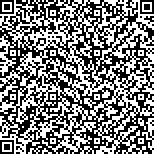Archive > Volume 46 Issue 12 > 2020,46(12):1575-1584. DOI:10.7519/j.issn.1000-0526.2020.12.005 Prev Next
Applicability of FY-4A Surface Solar Irradiance Products in the Loess Plateau of Shanxi
- Article
- Figures
- Metrics
- Preview PDF
- Reference
- Related
- Cited by
- Materials
Abstract:
In this paper, the Loess Plateau of Shanxi was selected as the research area, and the quality of FY-4A surface solar irradiance (SSI) was comparatively tested by using the minutely global irradiance data of three national meteorological stations in the region.The results show that SSI is highly correlated with ground observation data in Loess Plateau of Shanxi, which can better reflect the influence of meteorological factors on solar radiation. The global irradiance is generally high, and the relative error decreases with the increase of the global irradiance observed on the ground. The morning and evening errors are large but the noon errors are small. From the transverse comparison of Datong, Taiyuan and Houma stations, the higher the annual global radiation exposure, the smaller the relative errors. The critical value of sunset zenith angle is set at 70° in FY-4A SSI algorithm, resulting in about 1/3 of the whole year’s non observed time in daytime. The total radiation exposured in winter is lower than that in summer, which makes the monthly global radiation exposure lower in winter but higher in summer. The above characteristics of SSI are basically derived from its algorithm or parameter settings, so it has universality. Due to the strong regularity of relative errors, it is possible to revise the data and reduce the error level substantially in the next step.
Keywords:
Project Supported:
Clc Number:


Mobile website









